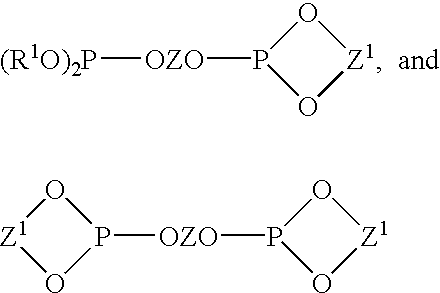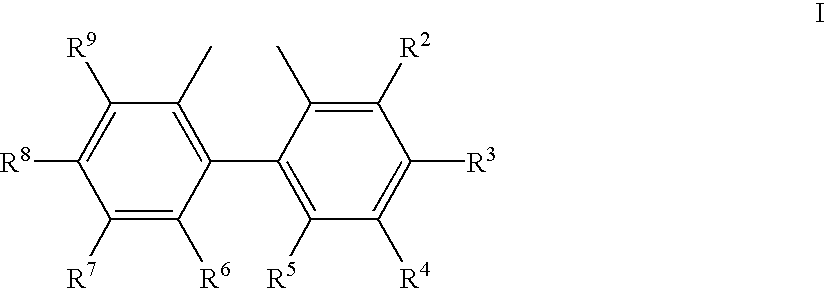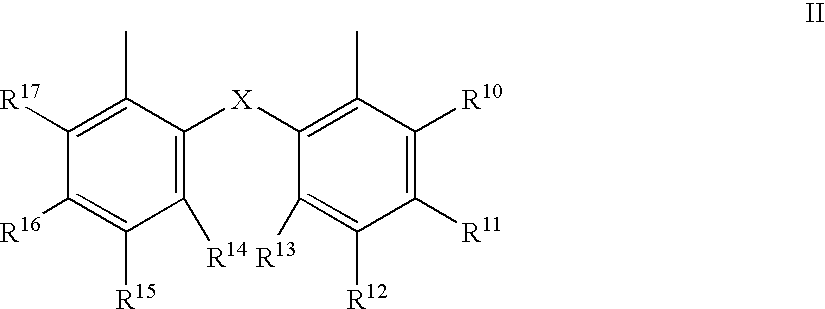Process for the preparation of a nickel/phosphorous ligand catalyst for olefin hydrocyanation
a technology of hydrocyanation catalyst and nickel/phosphorous ligand, which is applied in the direction of catalyst activation/preparation, physical/chemical process catalyst, organic compound/hydride/coordination complex catalyst, etc., can solve the problem of increasing the formation rate of catalyst and increasing the amount of degradation produ
- Summary
- Abstract
- Description
- Claims
- Application Information
AI Technical Summary
Benefits of technology
Problems solved by technology
Method used
Image
Examples
example 1
[0040]A 100 mL reaction vessel fitted with a mechanical stirrer was charged under a nitrogen atmosphere blanket with 3-pentenenitrile (80 mL; 830 mmol), ligand V (18 g; 19 mmol), NiCl2 (3.22 g; 24.8 mmol), and zinc powder (0.61 g; 9.3 mmol). The reaction mixture was stirred at 100° C. for 3 hours, and samples were withdrawn every 30 minutes for analysis. After 2 hours, 70% conversion of NiCl2 to catalyst had occurred, and after 3 hours, greater than 95% conversion of NiCl2 to catalyst had occurred.
example 2
[0041]A reaction was executed in the manner of example 1, except that the amount of NiCl2 charged (1.61 g; 12.4 mmol) was half as much. After 2 hours, about 37% conversion of NiCl2 to catalyst had occurred, and after 3 hours, about 60% conversion of NiCl2 to catalyst had occurred.
[0042]In the following examples 3 to 10, a catalyst source which was depleted in active nickel, called “recycle catalyst,” was recharged. In these cases, “recycle catalyst” contained 11 weight percent (wt %) Ligand V in 3-pentenenitrile.
example 3
[0043]A 100 mL reaction vessel fitted with a mechanical stirrer was charged under a nitrogen atmosphere blanket with recycle catalyst (100 g, containing 11 wt % ligand V), NiCl2 (1.21 g; 9.3 mmol), and zinc powder (0.61 g; 9.3 mmol). The reaction mixture was stirred at 80° C. for 4 hours, and samples were withdrawn every 30 minutes for analysis. After 4 hours, less than 2% conversion NiCl2 to catalyst had occurred.
PUM
| Property | Measurement | Unit |
|---|---|---|
| Temperature | aaaaa | aaaaa |
| Temperature | aaaaa | aaaaa |
| Temperature | aaaaa | aaaaa |
Abstract
Description
Claims
Application Information
 Login to View More
Login to View More - R&D
- Intellectual Property
- Life Sciences
- Materials
- Tech Scout
- Unparalleled Data Quality
- Higher Quality Content
- 60% Fewer Hallucinations
Browse by: Latest US Patents, China's latest patents, Technical Efficacy Thesaurus, Application Domain, Technology Topic, Popular Technical Reports.
© 2025 PatSnap. All rights reserved.Legal|Privacy policy|Modern Slavery Act Transparency Statement|Sitemap|About US| Contact US: help@patsnap.com



